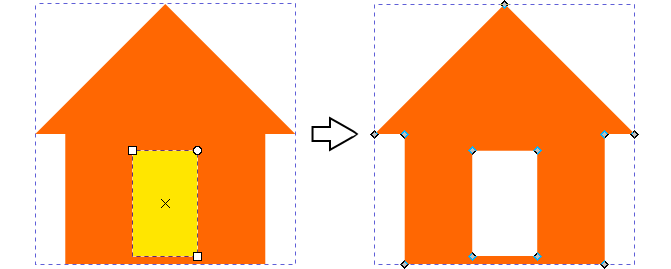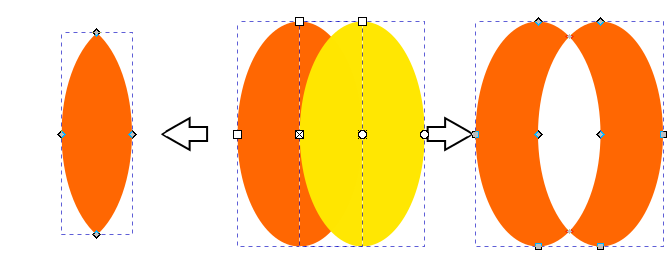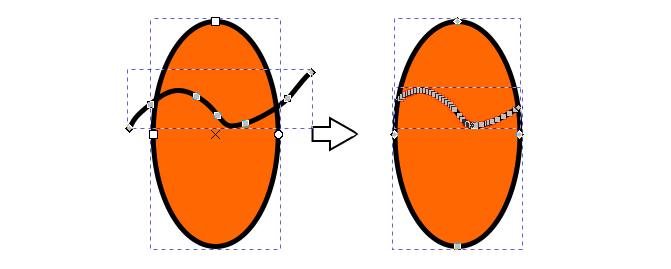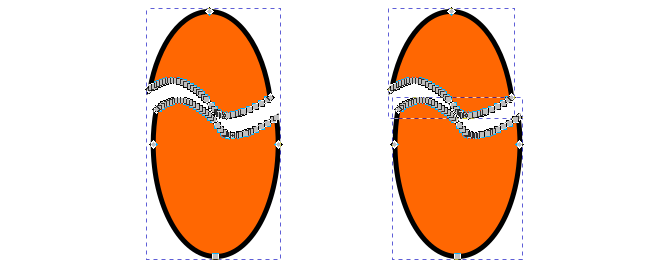Boolean Operations
The Boolean Operations work on paths, or they try to convert the selected objects to paths before they compute the result. All these operations need at least 2 convertible objects or paths, which will be combined following specific rules.
Union
Keeps the common outline of all selected paths.
Difference
Subtracts one path from another one.
Intersection
Only keeps those parts that are covered by all selected paths.
Exclusion
Keeps those parts which are covered by an odd number of paths (if you have two objects, this is where the objects do not overlap).
Division
The path below is cut into pieces by the path above.
Cut Path
Creates as many paths as there are path intersections between the two paths.
Combine
Keeps all parts, and combines them into a single object.
Break Apart
If a path consists of a number of independent parts (subpaths), this will create that number of separate objects.
To use these operations, select the two (or more) objects, and then select the option of your choice in the Path menu. The result will immediately appear on the canvas - if it doesn’t, read the error message that will appear in the status bar, at the bottom of the Inkscape window, to find out about the reason for the failure.
Hint
The stacking order of the object matters, so check that the bottom object is the one you want to apply the operation to. To know how each operation will apply, look at the icons: the circle is always on top of the square.

Unioning a triangle and a square gives a house.

Difference between a rectangle and a house creates an opening for the door.

Two overlapping ellipses. On the left: Intersection between the two ellipses. On the right: Exclusion between the two ellipses.

Someone has drawn a path with the pencil tool on the orange ellipse on the left. On the right: Division.

On the left: Move apart and combine (to form a single path composed of two subpaths). On the right: Break Apart separates all subpaths into independent objects.